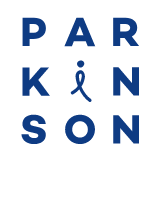- Parkinson’s disease
- Services offered
Free, confidential and bilingual
Opening hoursMonday to Friday : 8:30am – 4:30pm
Saturday and Sunday : closedFor urgent information outside service hours, you can refer to the Info Santé line by calling 8-1-1.
- Research commitment
- Get involved
- Donate
- About us
Home > Parkinsons Disease > Symptoms > Parkinson’s and Bladder Problems
Parkinson’s and Bladder Problems
Age is the main cause of many bladder problems. Parkinson’s disease can make some of these conditions worse. There are many options for treating overactive bladder.

One third of people with Parkinson's disease have bladder problems.
The bladder stores the urine produced by the kidneys. Urinating involves two simultaneous processes: 1) the contraction of the bladder muscles and 2) the opening of a valve so that the urine can be drained.
When the bladder contains a certain volume of fluid, a reflex signal is sent to the brain to warn it that it is time to go to the bathroom. The brain then sends a signal to release the pressure on the bladder muscles and strengthen the valve tone. Once on the toilet, the brain commands the bladder muscles to contract and open the valve.
The most common problems are usually related to:
Overactive bladder
Feeling that the bladder is full
Frequent and/or urgent need to urinate, including at night
Difficulty holding it in
Involuntary urine leakage (incontinence)
Hypoactive bladder
Difficulty starting to urinate
Feeling that the bladder is not completely empty
Urinary leakage
People living with Parkinson’s disease can be affected by both types of problems.
What are the natural causes of bladder problems?
Age is the main factor in these disorders, which affect men and women differently.
Around the age of 50, women can develop urinary incontinence disorders mainly due to a change in pelvic musculature following pregnancy. In these cases, the muscles that allow the valve to properly close the bladder may be damaged. Coughing, laughing or pressure on the stomach can lead to slight urine leakage.
In men, urinary problems are linked to an enlarged prostate, which then crushes the duct that connects the bladder to the outside. This makes it harder to urinate.
Age is the main factor in these disorders, which affect men and women differently. Around the age of 50, women can develop urinary incontinence disorders mainly due to a change in pelvic musculature following pregnancy. In these cases, the muscles that allow the valve to properly close the bladder may be damaged. Coughing, laughing or pressure on the stomach can lead to slight urine leakage. In men, urinary problems are linked to an enlarged prostate, which then crushes the duct that connects the bladder to the outside. This makes it harder to urinate.
Degeneration of the neurons that control the bladder and valve muscles can worsen existing disorders. The normal response to a certain volume of fluid in the bladder is affected. The bladder then becomes overactive or hypoactive.
When should I tell my doctor about these problems?
Generally speaking, people urinate 4 to 7 times a day and once a night. If you urinate more or less often than this and you have some of the symptoms identified above, you should talk to your doctor.
Age is the main factor in bladder problems. Other conditions, such as a urinary tract infection, certain medications or prostate problems in men can also cause urinary problems.
A complete urological examination will help rule out other potential causes. Your doctor may ask you to keep a voiding diary to assess your bladder’s storage capacity. To keep this diary, you will need to collect your urine in a measuring cup for a few days and record the amount you urinate and the time of day.
What can I do?
Here is some advice that could help you:
- Try to go to the bathroom at set intervals
- Plan your trips based on bathroom accessibility (if you are going somewhere where a bathroom is not easily accessible, go to the bathroom immediately before leaving home)
- Go to the bathroom before the urge to urinate becomes overwhelming
- Avoid drinking coffee, or any other diuretic drink
- Limit water intake before bedtime
- Do not reduce the amount of water you drink during the day, you may become dehydrated. Split your water intake
- Try doing pelvic muscle strengthening exercises (ex. Kegel exercises)
Consult a physiotherapist, kinesiologist or nurse continence advisor. These specialists can recommend exercises to strengthen the muscles around the bladder.
If you suffer from incontinence, you can use protective underwear. There are several models available to suit your needs. Your doctor or pharmacist can help you make the right choice.
What are the bladder problem treatments available?
Antiparkinsonian treatments do not solve bladder problems. However, an optimal dosage during the day can reduce certain disorders.
Three types of medications are regularly prescribed to control bladder problems.
- Anticholinergics ( oxybutynin, tolterine, trospium) are prescribed in cases of overactive bladder. These medications will reduce the feeling of urgency, incontinence and frequency of urination. They can cause constipation, glaucoma and reduced attention span. They are not recommended for elderly people.
- Mirabegron is the first drug approved for the treatment of overactive bladders. It does not have the same side effects as anticholinergics.
- Antimuscarinics (ex. fesoterodine, solifenacin) prevent bladder muscle contraction.
- Botulinum toxin injections into the bladder muscle reduce excessive bladder contractions. This last-resort treatment has to be repeated every few months to maintain its effectiveness.
How do bladder problems progress over time?
Bladder problems mainly occur around the age of 50, in all people, whether or not they have Parkinson’s disease.
Symptoms usually progress with age and disease severity. Incontinence can occur at a more advanced stage of Parkinson’s disease. In more severe cases, bladder surgery or catheterization may be considered.

